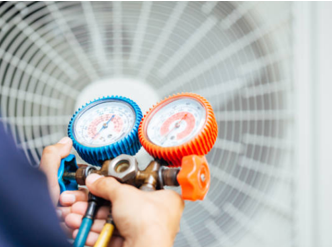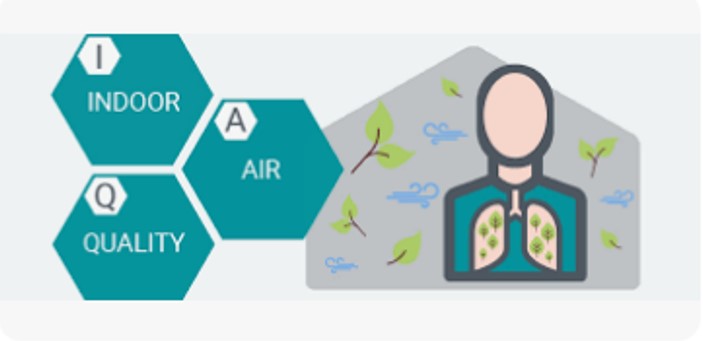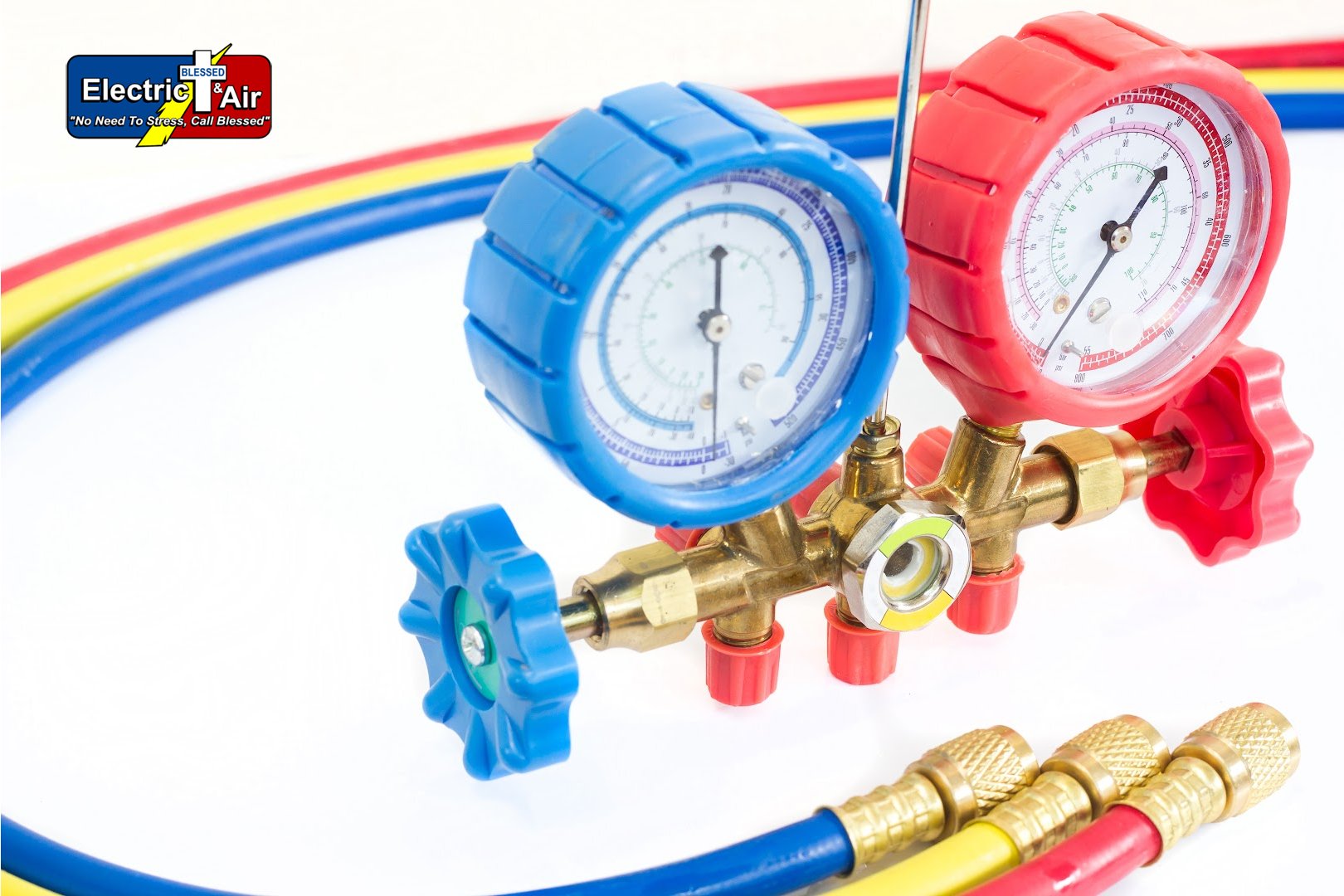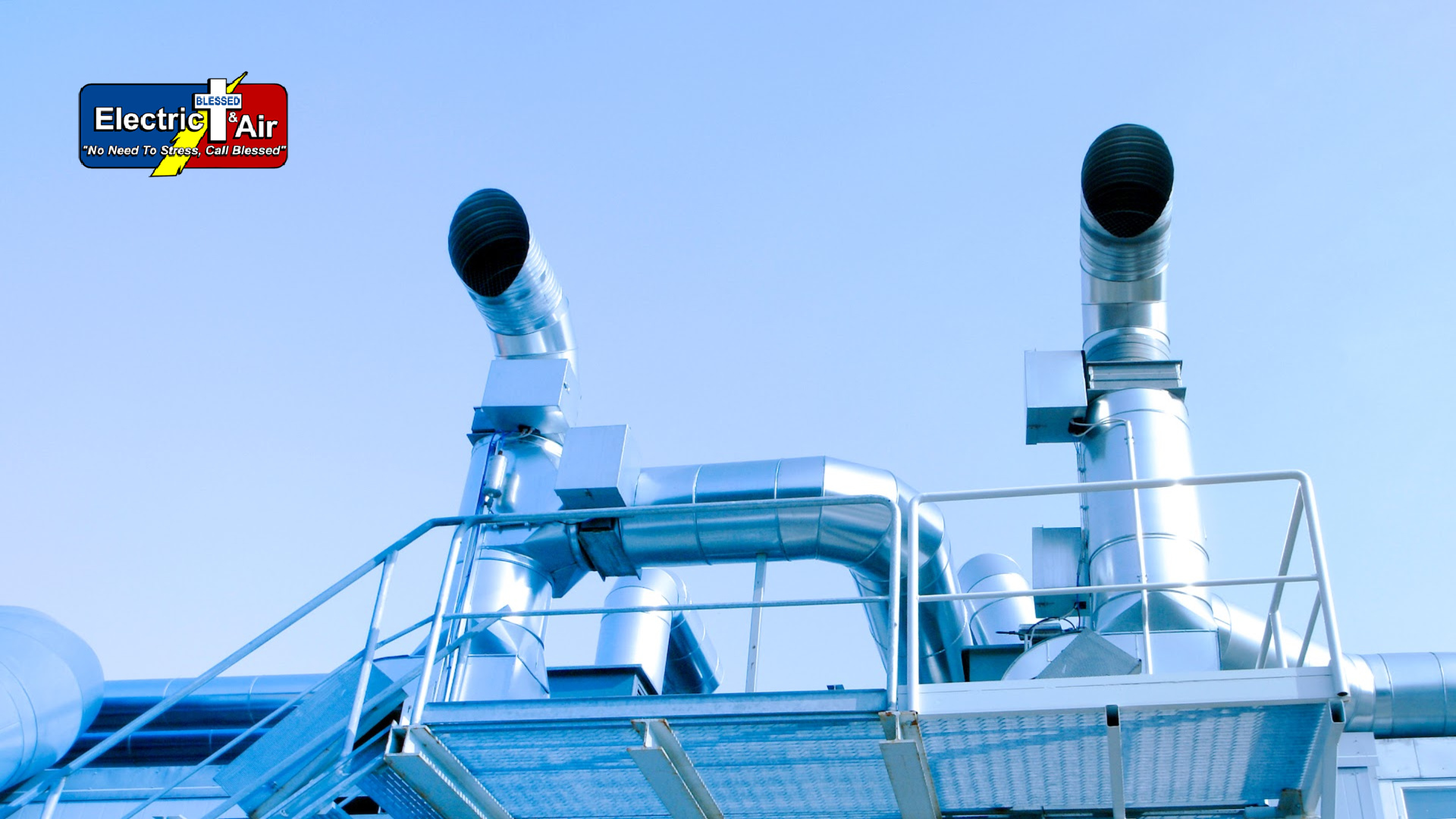We are a leading provider of heating, ventilation, and air conditioning (HVAC) maintenance services. Our team of highly skilled and certified technicians is dedicated to ensuring that your HVAC system is running at peak performance, helping to keep your home or business comfortable and energy efficient.
Our HVAC maintenance services include regular inspections, cleaning, and repairs, as well as the replacement of worn or damaged parts. By maintaining your HVAC system, we can help to extend its lifespan, increase its energy efficiency, and prevent costly breakdowns.
In addition to our regular HVAC maintenance services, we also offer emergency repair services, so you can rest assured that we’ll be there when you need us most.
We service all makes and models of HVAC systems and our technicians are equipped with the latest tools and technology to diagnose and fix any problem quickly and efficiently.
At Blessed Electric, we understand the importance of maintaining a comfortable and healthy indoor environment, and we strive to provide our customers with the highest level of service and satisfaction. Contact us today to schedule a maintenance visit or to request emergency service.
The Importance of HVAC Maintenance
HVAC (heating, ventilation, and air conditioning) systems are essential for maintaining comfortable temperatures and good indoor air quality in homes and commercial buildings. Regular maintenance is crucial for ensuring that these systems operate at peak efficiency and for prolonging their lifespan. Here, we will discuss the importance of HVAC maintenance and the services offered by our HVAC maintenance team.
Why is HVAC Maintenance Important?
HVAC systems are complex and have many components that require regular attention. Over time, these components can wear out or become clogged with dust and debris, leading to reduced efficiency and higher energy bills. In some cases, a lack of maintenance can even lead to costly repairs or complete system failure. Regular maintenance can help to prevent these problems and keep your HVAC system running smoothly.
Regular HVAC maintenance can also help to improve indoor air quality. Furthermore, HVAC systems are designed to circulate air throughout a building, but if the system is not properly maintained, it can circulate dust, allergens, and other pollutants. This can cause allergies and other respiratory problems. Of course, by having your HVAC system serviced regularly, you can ensure that the air you and your family are breathing is as clean as possible.
What is Our HVAC Service Checklist?
As the go-to Dallas HVAC specialist, we offer a wide range of services to help keep your HVAC system running at peak efficiency. Some of them include:
- Inspection and Cleaning: This is the most basic form of HVAC maintenance and involves a thorough inspection of your system, followed by a cleaning of all the components. This can include cleaning the air filters, coils, and ducts.
- Repairs: If any problems are identified during the inspection, our HVAC maintenance team can make repairs to your system. This can include fixing leaks, replacing worn or damaged parts, and adjusting settings.
- Tune-ups: A tune-up is a more comprehensive form of maintenance that involves checking all of the major components of your HVAC system and making any necessary adjustments to ensure that the system is operating at peak efficiency.
- Installation: Our Dallas HVAC maintenance team can also install new HVAC systems if yours is beyond repair or you’re looking for an upgrade.
- Preventive Maintenance: We carry out scheduled maintenance to proactively prevent future issues and prolong your system’s lifespan.
- Energy Audit: We check how energy efficient your system is and we provide recommendations on how to improve energy efficiency.
How Often Should HVAC Systems Be Serviced?
It is recommended that you have your HVAC system serviced at least once a year. However, if you use your system frequently or live in an area with a lot of dust or other pollutants, you may need to have your system serviced more often. It’s best to consult a professional Dallas HVAC maintenance service provider to determine the best schedule for your specific system and needs. And you can contact us as well.
Choosing an HVAC Maintenance Company
When choosing an HVAC maintenance company, it’s important to select a company that is licensed, insured, and has a good reputation. You can ask for references from the company and check online reviews to get an idea of the quality of their services. It’s also a good idea to get a written estimate for the cost of services before any work is done.
In conclusion, HVAC maintenance is essential for ensuring that your system operates efficiently and for maintaining good indoor air quality. Regular maintenance can also help to prevent costly repairs and prolong the lifespan of your system. As a HVAC maintenance expert, we offer a wide range of services, including installation, inspection, cleaning, repairs, and tune-ups. For more information, contact us right away.







